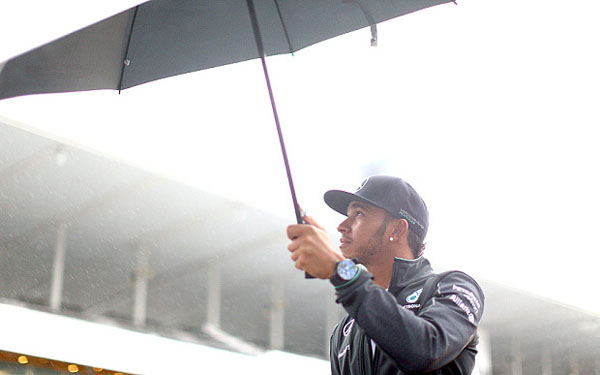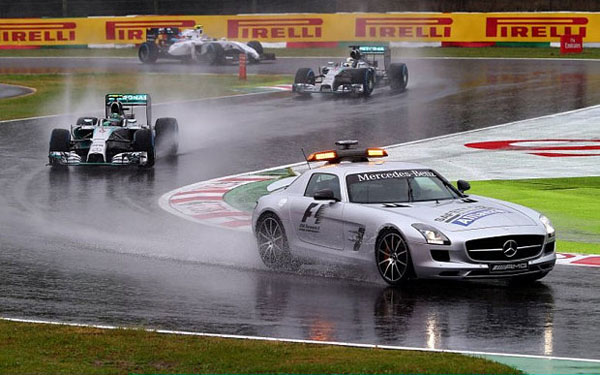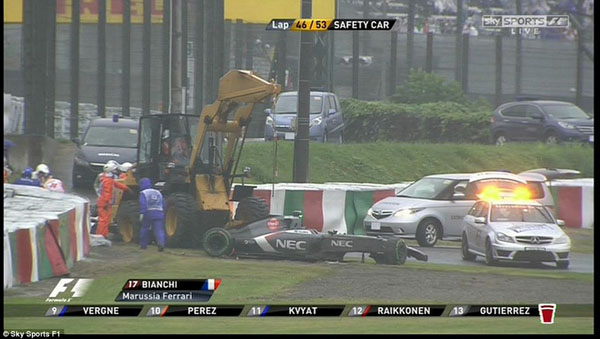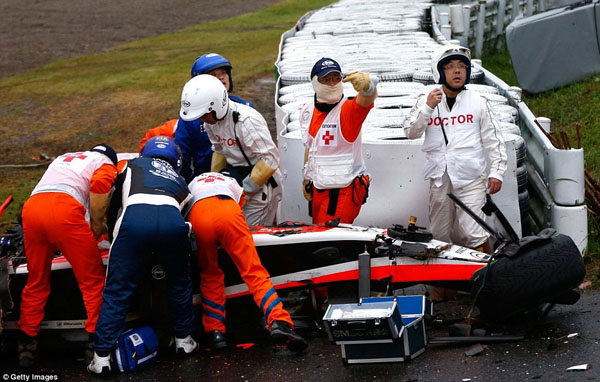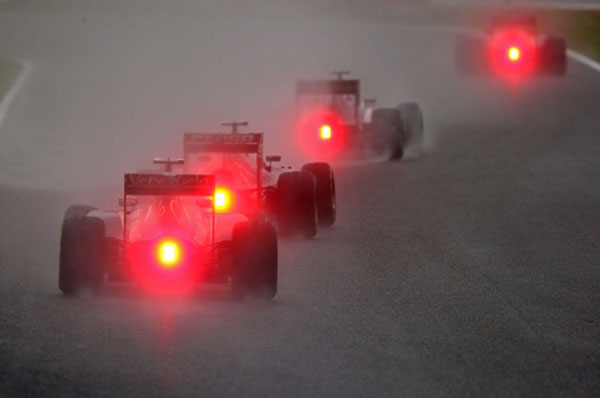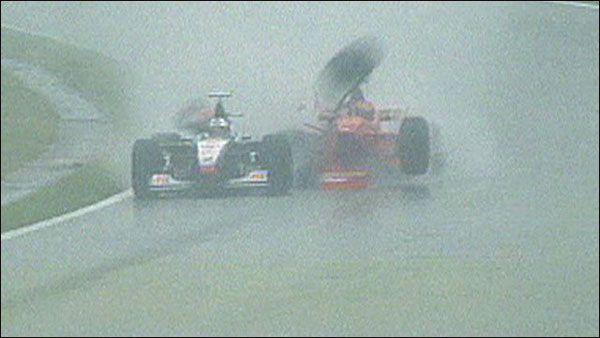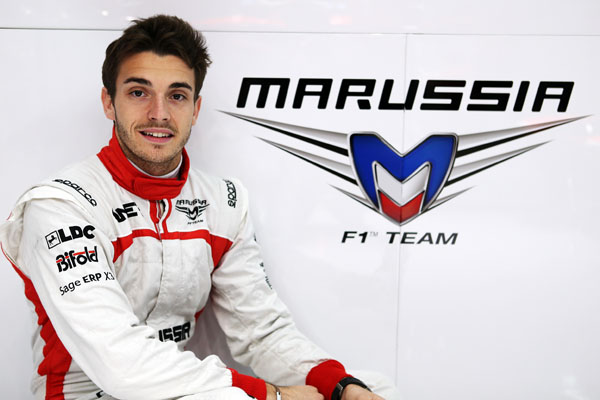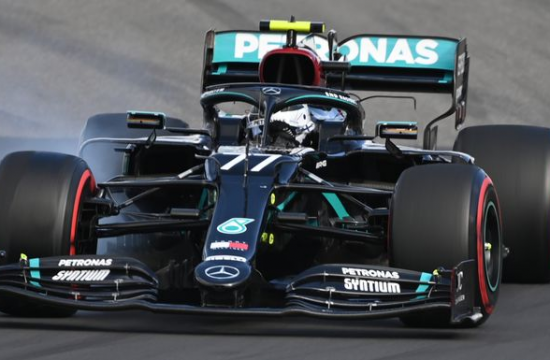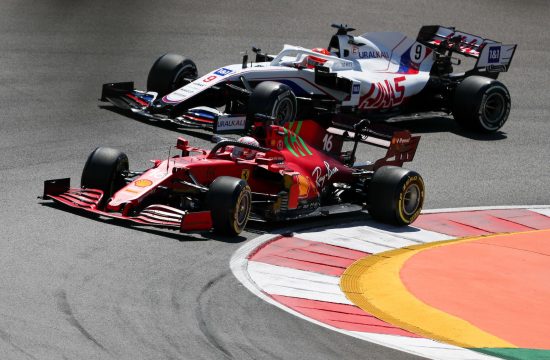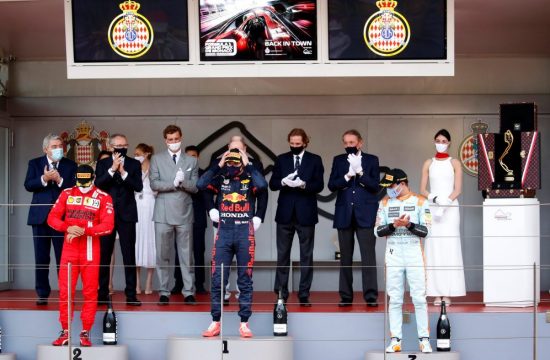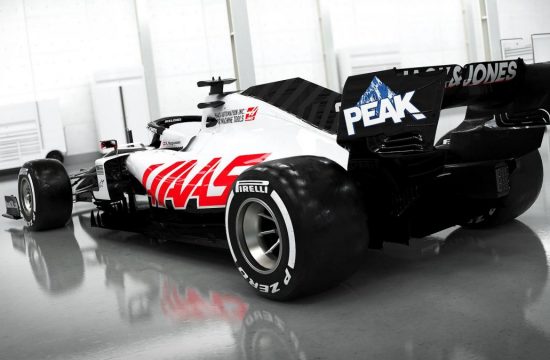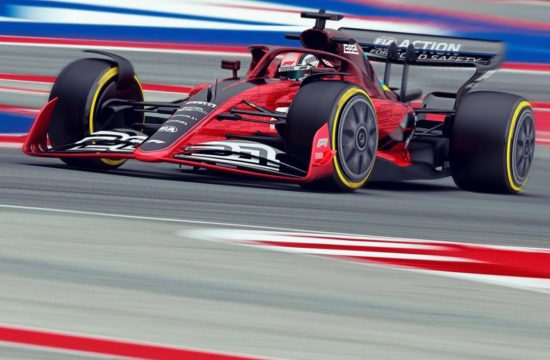Thanks to Mercedes and their drivers’ intense rivalry and desire to win, the handful of races leading up to Japan have taken the F1 season into another direction – criticisms regarding turbochargers, reliability and engine notes are but distant memories, faded snippets of film in comparison to the full-on IMAX 3D experience presently unfolding on and off the track.
Recently, I wrote a short article on the battling duo and their resemblance to the tumultuous F1 relationships of yesteryear – Lewis Hamilton and Nico Rosberg have reached a point of no return, where trust means nothing and team orders fall upon deaf ears. The gloves are now off at the top of the standings – as the Silver Arrows take chunks out of one another, success falls only to those lucky enough to capitalise on their shortcomings.
Suzuka looked to have all the right ingredients for a real grudge match where Hamilton and Rosberg could slug it out on a track known for its capricious weather conditions.
As always at Suzuka, the heavens opened on race day and the pitlane was thrown into a frenzy of data analysis and tyre decision – technology is very clever and useful, but a simple glance at the skies told you more than any piece of equipment: rain, and lots of it.
I made a cup of tea, settled in, and prepared for a race I hoped would see the two giants come to blows. And although the skies were heavy and filled with gloom, a cloud far darker would eventually cast its shadow over Suzuka, ending both an exciting climax, and ultimately, the entire race.
To cut a long story short, the Japanese Grand Prix can be summed up with the words, downpours, safety cars, red flags, and tragedy.
Okay, so once the race managed to get underway, entertainment came from the Silver Arrows taking turns at the front, with Hamilton showing unbelievable bravery in the wet by overtaking Rosberg on the outside, and the rain provided entertainment in the odd spin and mistake… until tragedy struck.
By the end of the race, drivers were literally screaming into their radios, informing their teams the track was too dangerous to continue. With the rain still falling, a further three or four laps passed like this, and it wasn’t until Adrian Sutil spun off into a barrier at Dunlop that the officials took any notice.
Although a recovery vehicle swiftly attended to Sutil’s car, the phrase ‘Too little too late’ comes into play when racecars are forced into using their front wheels as rudders.
With the recovery vehicle still on track, the young Jules Bianchi spun off at the same point and his Marussia made contact with it so hard, it lifted it from the ground. The video below eventually cropped up, a rather disturbing few seconds highlighting just how violent the crash was.
http://youtu.be/I1cwbtk6CkA
The race was then red flagged on Lap 44 and Hamilton crowned as victor.
The much-loved Bianchi was unconscious and rushed to Mie General Medical Centre in Yokkaichi, where he had an operation on his head to alleviate a subdural haematoma.
Three days have passed since the terrible accident and Bianchi remains in critical condition, although he is said to be stable.
Questions have also been making the rounds, the majority aimed at race officials and their ‘poor’ judgment in controlling the race in such bad conditions.
They were criticised for the delay in deploying the safety car and not rolling the start time forward in order to avoid the worst of the rain.
You could argue that Bianchi’s accident was one of those freak incidents and F1 cars have raced in rain before, but officials knew Typhoon Phanfone was closing in on Suzuka. Instead of delaying the race, they started it behind the safety car, eventually having to red flag after one-and-half laps.
Masamichi Miyazaki, a spokesman for the Suzuka track, claimed the collision was not down to anything but bad luck and that Sutil’s accident had been covered in waved double yellow flags, meaning cars had to lift off enough to be prepared to stop. This is very well, but could the circulating cars see these flags in such poor conditions? Did Bianchi see these warning flags in time to lift off?
I remember Spa in 1998 when Michael Schumacher crashed into the back of David Coulthard. Because of the bad weather conditions, Schumacher couldn’t make out the red light on the rear of Coulthard’s McLaren.
After the race, seventh-placed Felipe Massa, said: “I could not see very well in the whole race. I was screaming on the radio five laps before the end, there was too much water.”
On the other hand, race-winner Hamilton claimed it (race conditions) wasn’t hardcore and they’d raced in more water at Silverstone in 2008.
Under the safety car at the beginning of the race, Hamilton was chomping at the bit and constantly telling his team it was okay to race, whilst others were claiming it was too wet. This is obviously a pretty hard judgement to make in race control when drivers are radioing contradicting reports.
Should the recovery vehicle have been on track in such ferocious rain?
The recovery team did a good job in reaching Sutil’s car, but when the track is this wet and cars are still effectively racing, surely the chances of another car making the same mistake are significantly increased? This is another aspect of safety the officials will have to consider if they are willing to let cars circulate in bad weather conditions.
I personally think the race should’ve been forwarded four hours to avoid the approaching typhoon. Perhaps the pressure of TV and fans had something to do with the safety car start?
The focus is now on Bianchi’s recovery and looking at ways in preventing this kind of accident doesn’t happen again.
Show some support and follow any updates on his progress via Twitter #ForzaJules #PrayForJules

